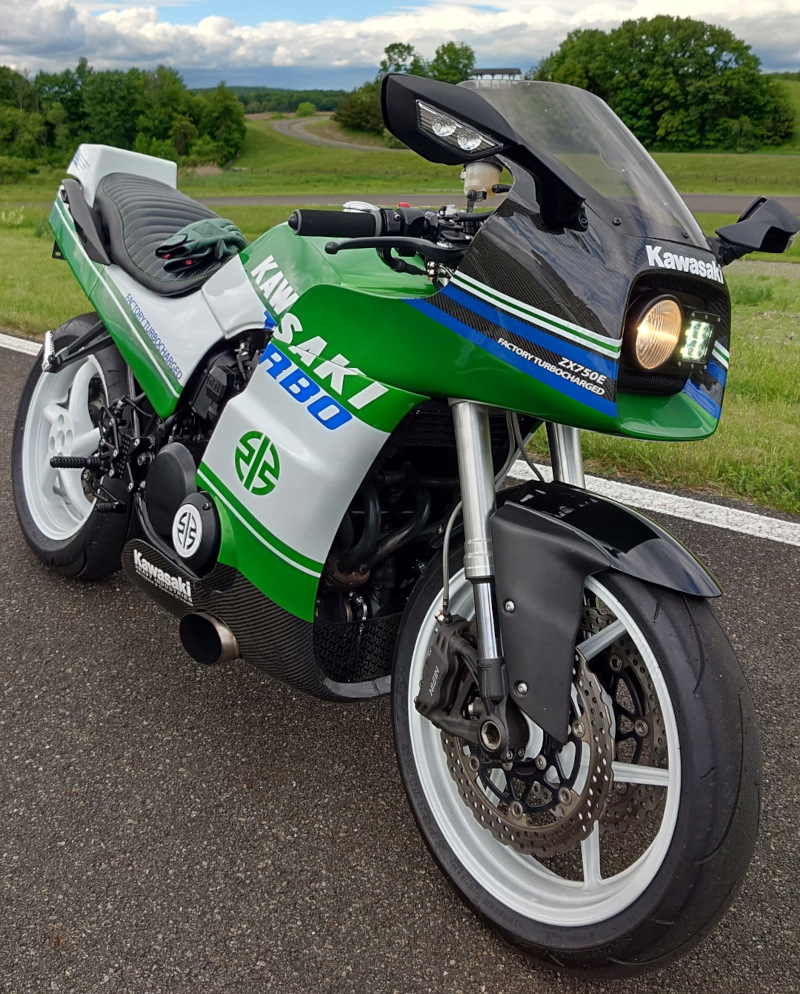 Functional Art: Bart Hoover’s Kawasaki ZX750E1 Turbo Restomod…
Functional Art: Bart Hoover’s Kawasaki ZX750E1 Turbo Restomod…
In the early 80s, Kawasaki began development of what would become the 750 Turbo — widely regarded as the best production turbo bike of the era. Known as the ZX750E, GPx750 Turbo, or just the 750 Turbo, the 112-bhp turbocharged Kawa weighed 25 pounds less than the big GPz1100 while producing more power in the 3000-7500 rpm range. It blew the wheels off forced-induction rivals like the Yamaha Seca and Honda CX turbos.
Cycle World claimed the transition to boost (as engine sucked in pressurized air and power output dramatically increased) transformed the 750 from “Mr. Milquetoast to Mr. Monster.”
“It’s the transition from one half of the Kawasaki Turbo 750’s split personality to the other, the transformation from mild to arm-yanking wild that makes it so exciting. To the right person, that excitement is worth the price of admission.” –Cycle World, 1984
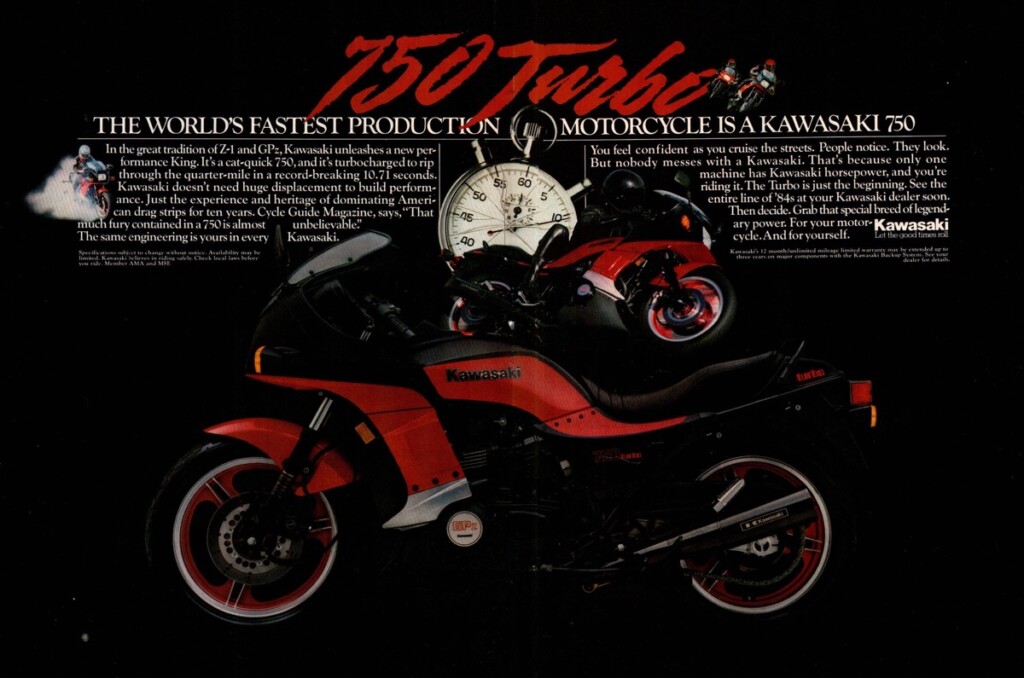
“My theory is you have a life-long appreciation for what you see as an impressionable teenager, so I have a soft spot for the ‘80s look, which maybe now with my generation is getting a nod.”
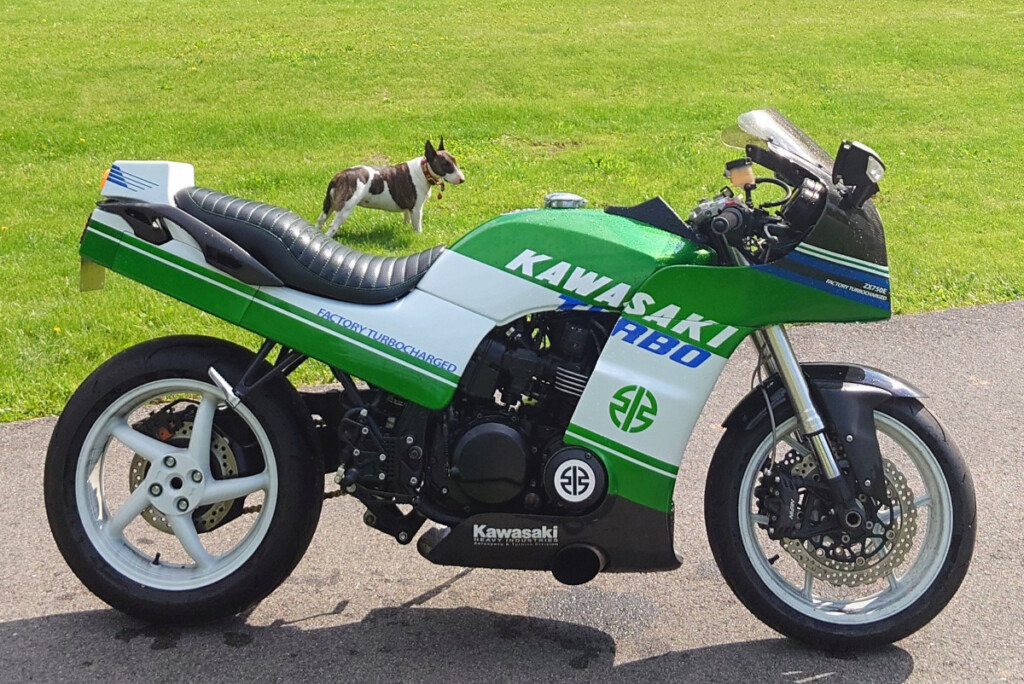
“I wanted to improve on some of the handling and performance, and indeed the looks of the original. My idea of functional art… With the 80s Gixxer and Katana, we got a new design language — angular shapes, long straight lines. I wanted to capture that ethos, as if they did a futuristic concept bike but looking as if it could have come from the factory…”
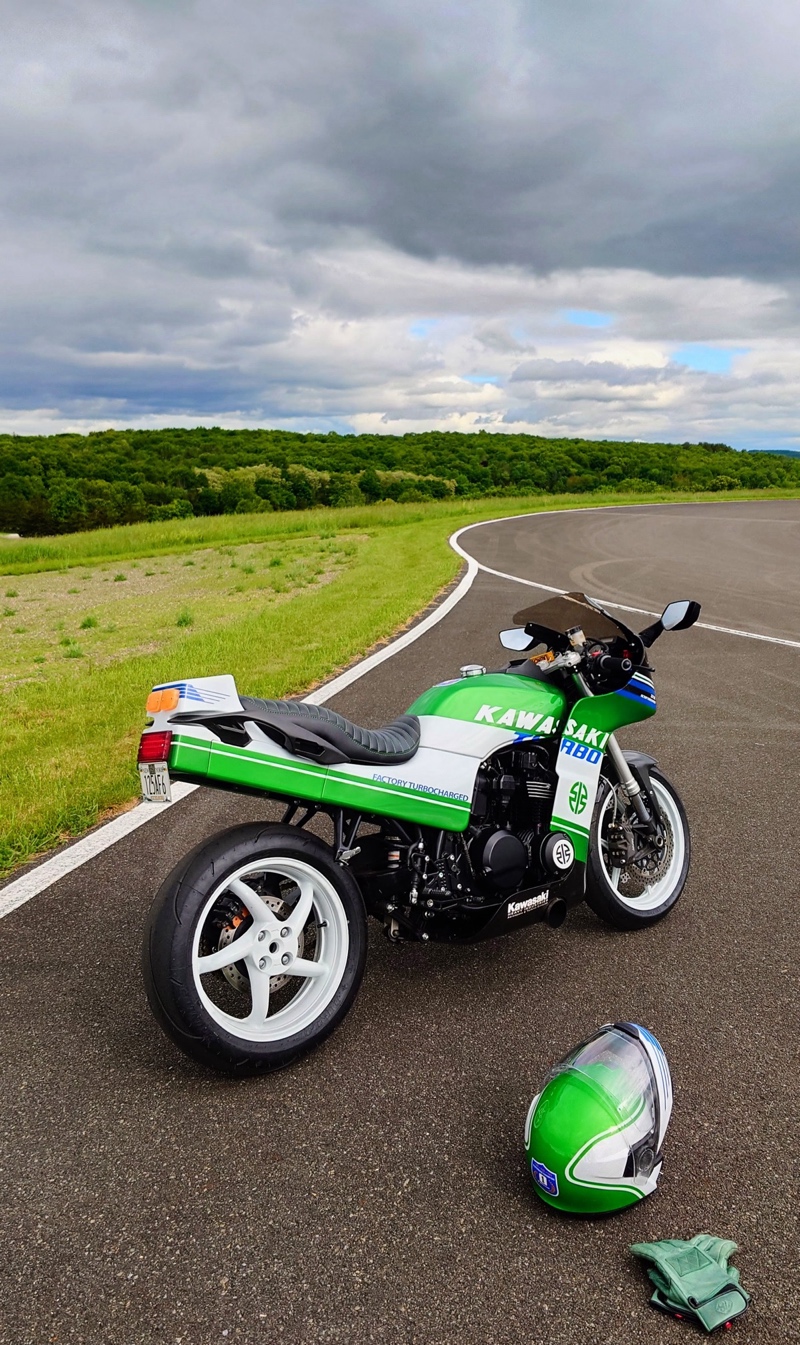
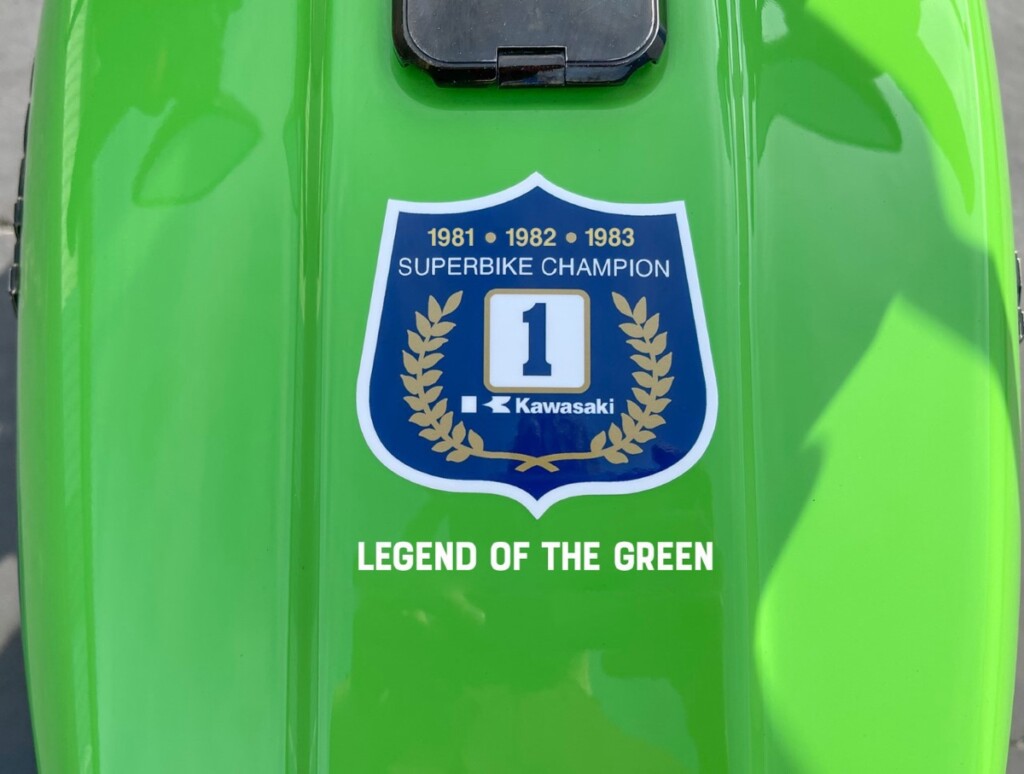

The “Legend of the Green” looks truly amazing — very much like a concept bike or limited-edition factory special of the era. But it’s no mere showpiece. Bart is a rider, and the riding experience is where this 750 Turbo truly shines.
“Above 6k, the impeller goes supersonic, starts chirping like mad, and all hell breaks loose… Hang on for dear life, cuz it wants to launch… You get the full monte sensorium: the exhaust dump on your right leg, the Tweety Bird fighting Wile E. Coyote sounds, the luminescent green of the tank, and the sudden yank when the turbo lag catches up to you…”
Legendary indeed! Hats off to Bart for bringing this turbocharged beast from a mere vision to a whistling, screaming, arm-pulling reality. Below you’ll find our full in-depth interview with Bart, along with many more details and a comprehensive build sheet.
Thanks for sharing your bike and story, Bart — we love it!
Kawasaki 750 Turbo Restomod: Owner Interview
• Please tell us a bit about yourself, your history with motorcycles, and your workshop.
Grew up with little YZinger 50cc two-strokes in Wyoming — my father got me on larger ones every few years… He always had a few street bikes, the first Katana, a GS, a K1 (I maxed that out at 155mph in British Columbia at around 20 yrs old…).
My theory is you have a life-long appreciation for what you see as an impressionable teenager, so I have a soft spot for the ‘80s look, which maybe now with my generation is getting a nod… I don’t wrench on bikes much myself, but I do enjoy the design aspect, and especially the riding — I spend a couple months a year in the saddle.
• What’s the make, model, and year of the donor bike?
1984 Kawasaki 750 Turbo.
• Why was this bike built?
The 80s was a time of great advancement in motorcycle technology and performance. Although forced induction didn’t take off, I thought it was a neat concept, and Kawasaki, always trying to be horsepower king, had the best of the bunch. It was overshadowed by the superseding 900 Ninja with its water-cooled 16v (allegedly the turbo may have been faster…😉) I wanted to improve on some of the handling and performance, and indeed the looks of the original. My idea of functional art.
• What was the design concept and what influenced the build?
I grew up in the transition from the organic forms of the UJMs… With the 80s Gixxer and Katana, we got a new design language — angular shapes, long straight lines. I wanted to capture that ethos, as if they did a futuristic concept bike but looking as if it could have come from the factory…
• What custom work was done to the bike? Selection as follows:
• Single-sided swingarm and rear wheel from Honda VFR.
• Triple tree, wheel and brakes from Kawasaki ZX7R.
• ECU is now in permanent race mode, so fuel cutoff raised from stock 14lbs to over 25…
• Billet turbo made by Charlie Brown at Evergreen Turbo.
• Muffler delete in favor of exhaust dump.
• Race fuel cap.
• Side cases and mirror/turn signal units from H2 SX SE.
• Phone bracket w USB power.
• Flip kill switch.
• Motogadget electronics and neutral gear indicator.
• Custom leather seat with hand grip rail.
• Custom CAD 3D-printed tail with printed lenses for LED brake and turn signals by Dom Tucci.
• My interpretation of a modified Eddie Lawson-era livery with modern Kawasaki Blazed Emerald Green, blue and white colorway, with text on tank reflecting the Lawson superbike victories, and the maker of the modern supercharger, Kawasaki Aerospace & Turbine Division, on the belly pan (in the 80s the manufacturers used to tell spell out features on the flanks, like Deltabox, SACS, etc…) Long parallel stripes to match lines of the seat, tank and fairing.
• Does the bike have a nickname?
“Legend of the Green.”
• Any idea of horsepower, weight, and/or performance numbers?
Weight should be still around stock… Haven’t found a place to get top speed or ¼ mile yet… was claimed 112 stock – with the upgraded turbo, electronics and exhaust, comps are in the 160-180 hp range.
• Can you tell us what it’s like to ride this bike?
It’s pretty tractable below 6k revs, can tool around town without too much fuss. Strangely not crazy loud. Above 6k, the impeller goes supersonic, starts chirping like mad, and all hell breaks loose… Hang on for dear life, cuz it wants to launch… You get the full monte sensorium: the exhaust dump on your right leg, the Tweety Bird fighting Wile E. Coyote sounds, the luminescent green of the tank, and the sudden yank when the turbo lag catches up to you…
• Was there anything done during this build that you are particularly proud of?
I’m quite keen on the ‘80s look, we don’t get that style enough. And I’m happy that we keep these rare bikes on the road…
• Is there anyone you’d like to thank?
- Pete Aceto at Top Dead Center was the mechanic and integrator.
- Dom Tucci at Tucci Design for the 3D modeling and parts.
- Charlie Brown at Evergreen Turbo.
- All the gurus at 750Turbo.com.
- Kar Lee at Kardesign Koncepts for cleanup of my drawings
- Alan Wilzig at Wilzig Racing Manor for use of his scenic proving grounds

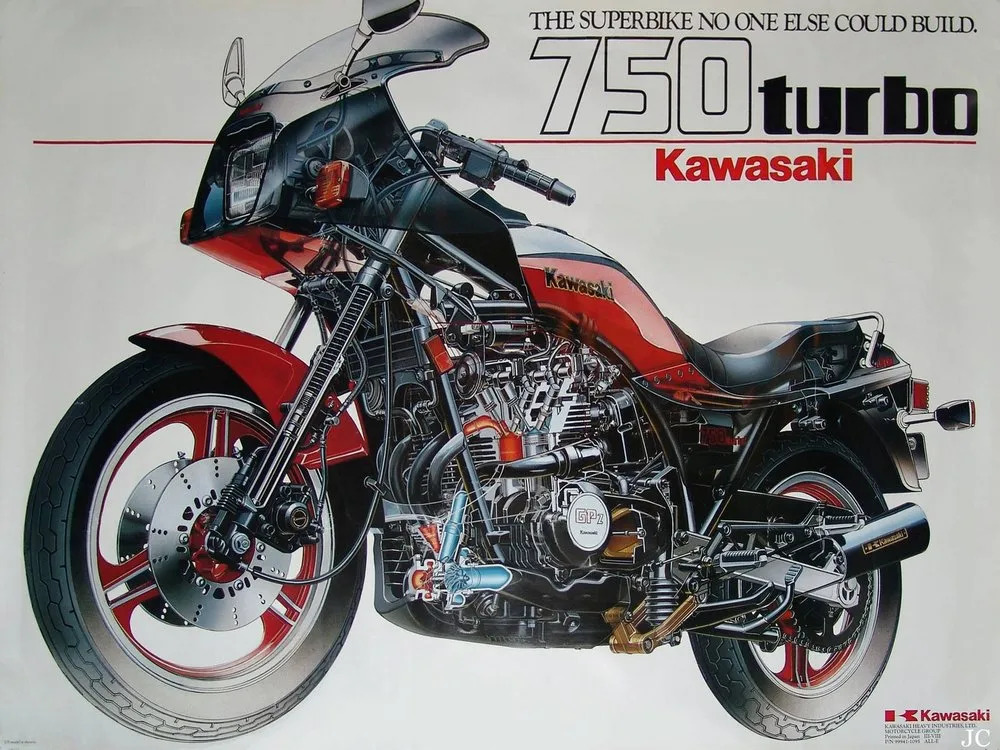

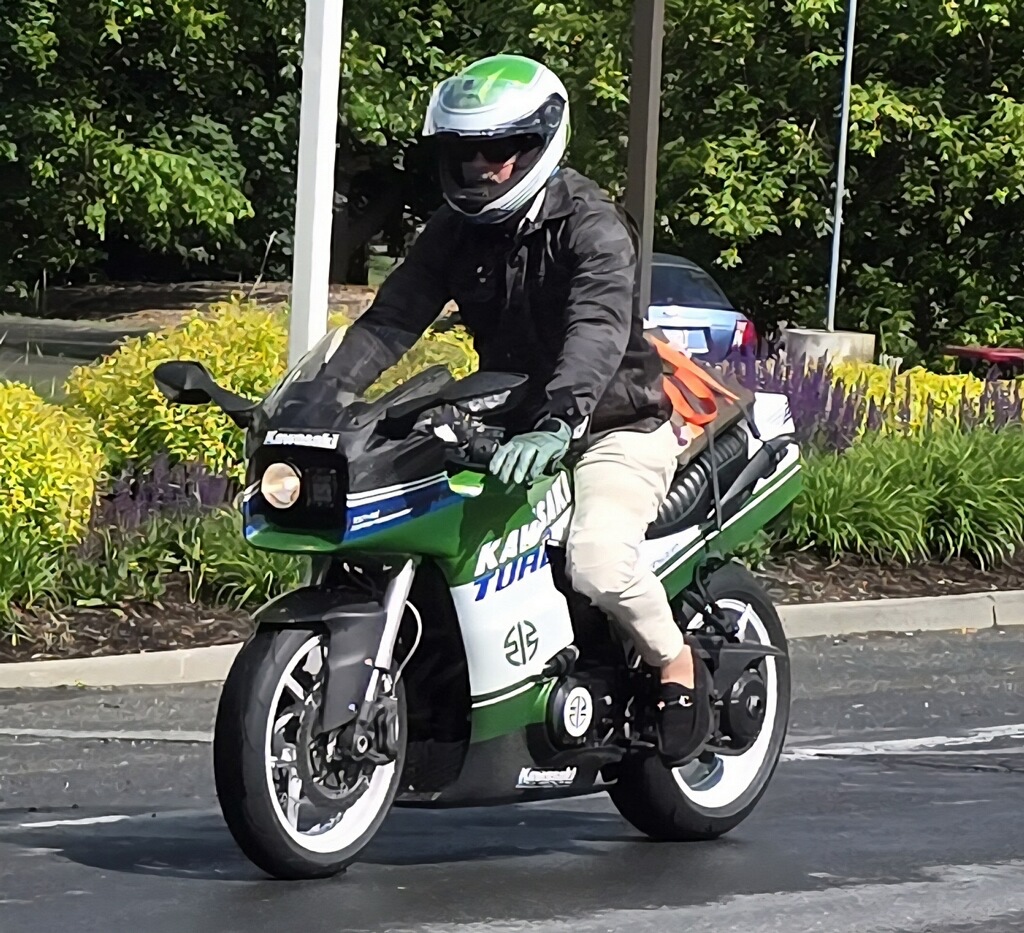


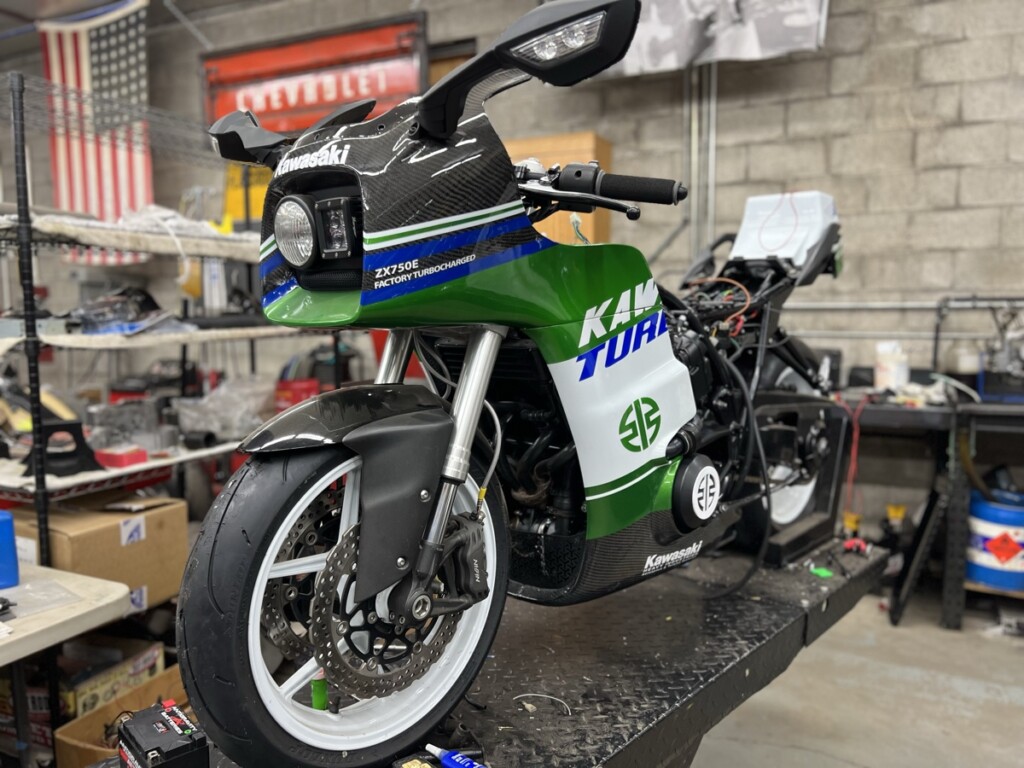




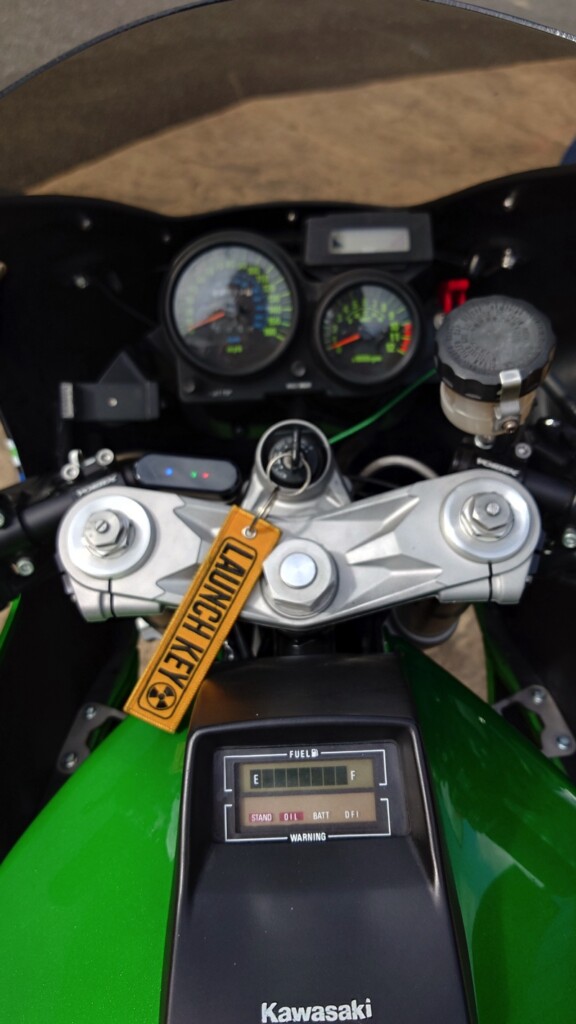
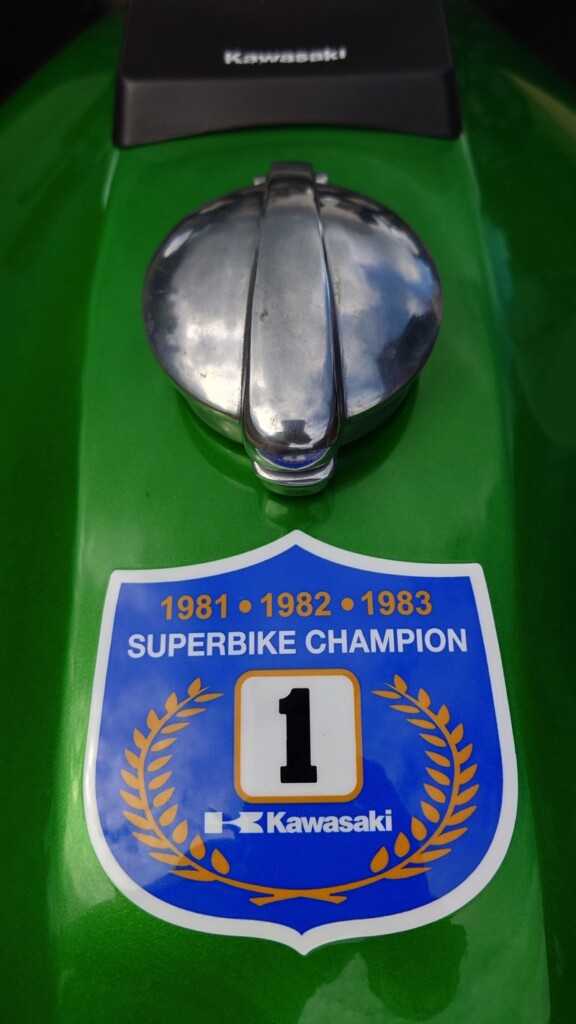

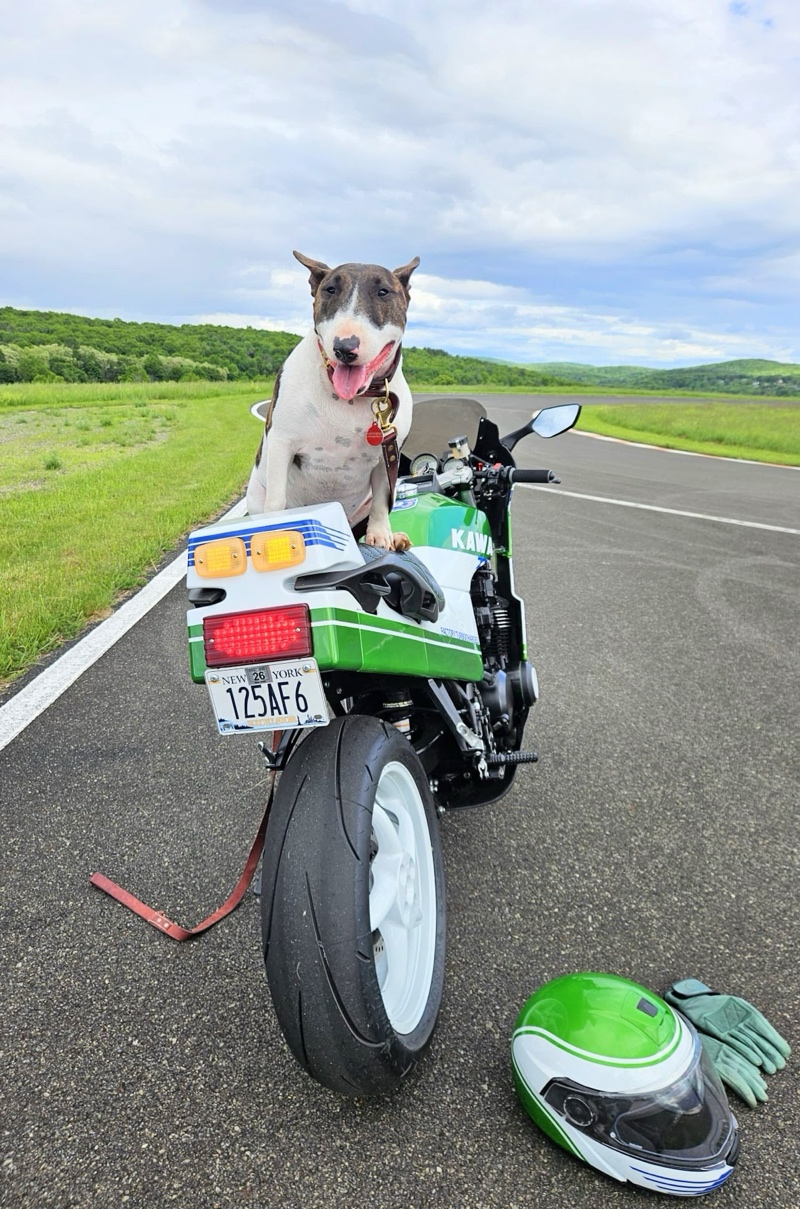

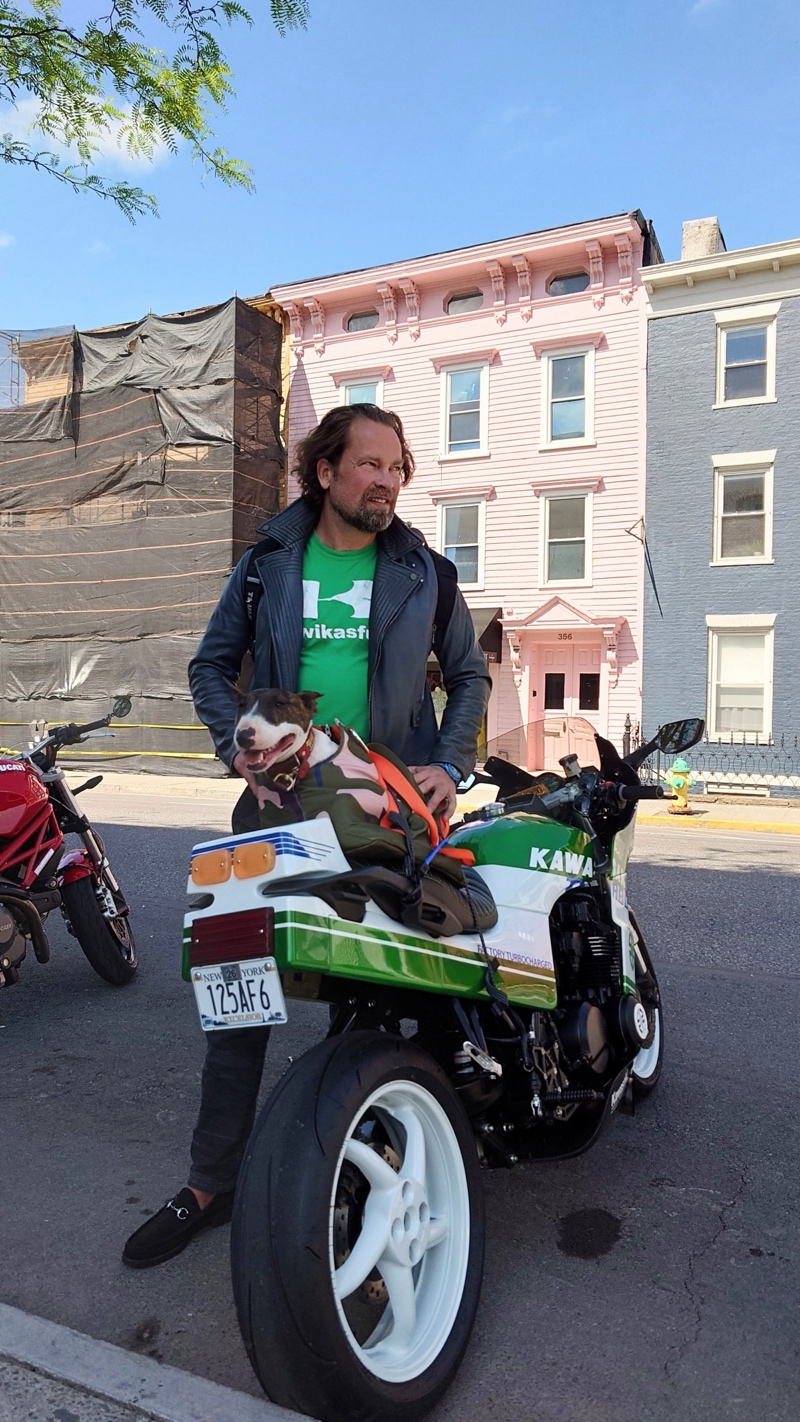





Great bike. I love it. I owned a GPZ 1100 in white in those days. They don’t make them like that anymore.